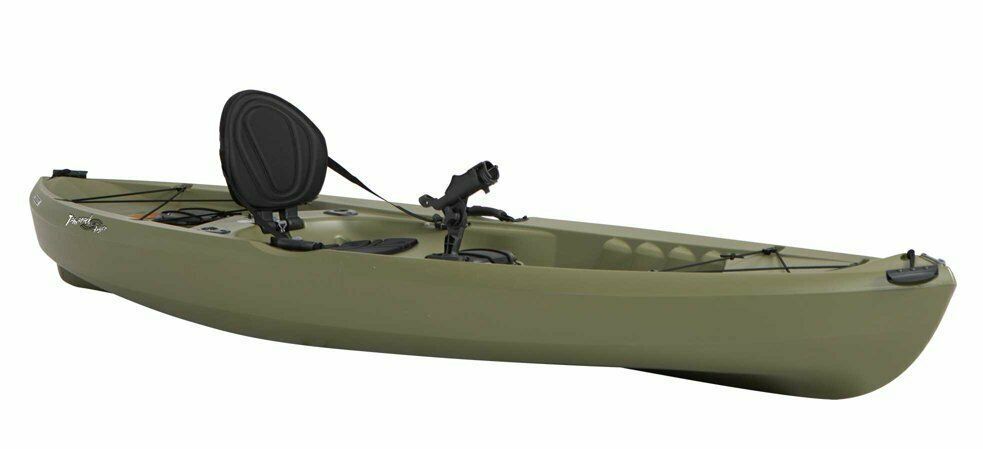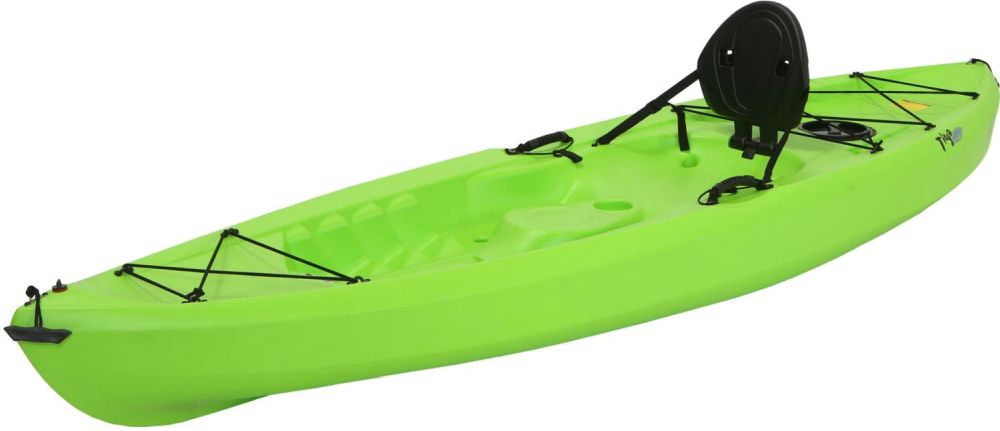Lifetime Tamarack Angler 100

Specs:
- Length: 10 feet overall
- Beam: 32″
- Height: 14″ (hull only)
- Weight: 51 pounds
- Capacity: 275 pounds
Hits:
- good compromise between size and capacity
- wide roomy cockpit, at the expense of deck storage
- two hatches for dry storage inside the hull
- side handles included
- solid seat back
Misses:
- side-mounted rod holder (removeable) is a little weird
- not quite as directionally stable as a longer hull
- not quite as fast as a longer hull
- the included paddle is just ok
As shown, this boat typically sells for about $350, and many places stock it. On clearance you can find it for $300. Stripped-down versions without all the accessories are as little as $240. The same basic hull is used across a number of models.
This boat is a great value – it comes fully-rigged with hatches, handles, rod holders, and a good seat with a solid folding seatback. Of course, the seat becomes uncomfortable after 20 minutes, but then they all do, you need to add your own cushion.
This boat is really nice to paddle. It tracks well. If you stop controlling it, it falls off to the side fairly slowly, thanks to the big skeg under the stern. If you plan to fish, you need that stability. Yet it also turns well and gives a decent turn of speed if you dig in with your paddle. Speaking of which, the included paddle is a toy, you’ll need a good one right away.
The inclusion of two hatches is a big plus, and one is near the stern so you can recover items lost in the hull by standing it on end and giving it a shake. Carry weight is not that bad, better for two people than one, especially car-topping. I would recommend a set of wheels for solo use.
If I was buying another kayak with my own money, I would get this one.

The Tioga is the same hull without the fishing accessories, at a slightly lower price and in a painful color. You could add the accessories later if you wanted them. I would just get the Angler. You can also find this same boat re-branded in other colors. This basic hull is also sold as a Tahoma, and probably other names as well, depending on the store.
The downside of this boat is that the hull is broad and flat without much of a bow, and it slaps and splashes in rough water. But no sit-on-top kayak is going to handle rough water very well.
Questions or Inquiries?
Just want to say Hello? Sign the .